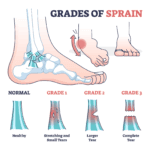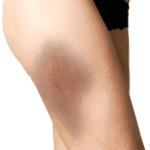Understanding your alternatives
If your arthritis treatment plan includes an oral nonsteroidal anti-inflammatory drug (NSAID), such as ibuprofen (Motrin®, Advil®) or naproxen (Aleve®), you may be concerned about the risks associated with these drugs.
Systemic NSAIDs carry a risk of cardiovascular and kidney issues, stroke, bleeding and ulcers, explains physiatrist. The risk increases with the duration of treatment.
If you have osteoarthritis in only a few joints, you may find pain relief in a safer form ― topical NSAIDs. The risks are still there with topical application, but they are significantly reduced.
What are topical NSAIDs?
A topical medication is one that’s applied directly to the skin. In the case of arthritis, it goes on the skin over the painful joint. The drug penetrates the skin, enters the joint and reduces the pain signals in the joint.
The topical NSAIDs available in the United States contain the drug diclofenac, and they require a prescription. Diclofenac is available in three topical formulations: gel, liquid and patch.
- Diclofenac gel (Voltaren Gel®) can be used to treat pain from osteoarthritis in the hands, wrists, elbows, knees, ankles and feet. It may be applied four times daily.
- The liquid formulation (Pennsaid®), which can be used for osteoarthritis of the knee, is applied twice daily.
- The patch (Flector Patch®) is placed over the most painful joint. It should be changed every 12 hours.
A review of several clinical studies, found that Voltaren gel is particularly effective. In this review, 60 percent of patients got 50 percent relief with topical NSAIDs. This was similar to the pain relief from oral NSAIDs and better than the placebo.
Topical NSAIDs are usually very well-tolerated. However, approximately 1 in 20 people experience a mild, temporary skin reaction, such as rash, redness, dryness or itchiness.
Is a topical NSAID right for you?
The American College of Rheumatology and the Centers for Disease Control and Prevention both recommend topical NSAIDs as one of the initial treatments for arthritic pain.
Topical NSAIDs are best for people with only a few painful joints. If you apply the NSAID to several joints you may exceed the recommended dosage and increase the risk of side effects. Patients with arthritis in multiple joints are better off treated with an oral NSAID or acetaminophen unless there’s a medical reason they shouldn’t take them.
Topical NSAIDs are particularly good for hand, knee or elbow arthritis. Because these joints are close to the surface of the skin they are more suited to topical treatment than deeper joints like the hip or shoulder.
Topical NSAIDs should always be used with caution in people with known cardiovascular or kidney disease. You shouldn’t use topical NSAIDs if you have had asthma, hives or other allergic-type reactions after taking aspirin or other NSAIDs. Also, topical NSAIDs shouldn’t be used after open heart surgery, such as coronary artery bypass graft surgery.





